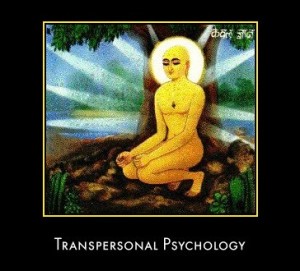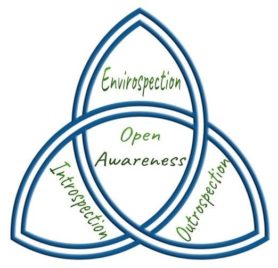 In this article I will explore the value of coaches having transpersonal perspectives, as well as the importance of accessing and utilising transpersonal states while coaching.
In this article I will explore the value of coaches having transpersonal perspectives, as well as the importance of accessing and utilising transpersonal states while coaching.
I will also cover how transpersonal states can be attained through a specific coaching approach. I will then suggest ways in which such empowering states can be maintained by the client in life after coaching sessions.
According to the Australian Psychological Society, coaching psychology draws on established psychological approaches and can be understood as being the systematic application of behavioural science to the enhancement of life experience, work performance and wellbeing for individuals. [1]
The above definition of coaching psychology is a fair representation of broadly used coaching psychology definitions. It suggests a valuable service provided to clients (coachees), albeit a “systematic application of behavioural science”, while many of the issues brought to coaching sessions do not follow systematic protocol.
Neuro-science has long known that our unconscious functioning precedes conscious awareness by at least half a second. [2] This means that most issues brought to coaching like procrastination, indecision, conflicting priorities, burnout, overwhelm, performance anxiety and fear are a result of automatic (unconscious) reactions and patterns which occur before conscious awareness.
According to master coach John Overdurf, in order to get powerful, lasting and rapid results in coaching, it is essential that the methods employed reach and influence the unconscious mind. [3]
Traditional forms of coaching generally don’t have much effect on the unconscious mind. Most coaching programmes available today rely heavily on conscious processing through questioning, analysis, and tasking. Overdurf says: “It’s like trying to steer a train by asking someone in the last car to change the direction of the entire train. It simply won’t work.” [3]
Evidently it is imperative that coaches are able to accurately elicit the unconscious processes that drive their client’s unwanted states and behaviours. Once the cause of the client’s issue is elicited, then an appropriate intervention is required in order to integrate relevant changes so that the client can experience the change or perform the new desired behaviour at least as automatically as the former issue.
Two questions arise:
Is it only a matter of learning the relevant coaching skills to eliciting and working with unconscious processes in coaching?
Or…
Is it a matter of coaches having the ability to access and utilise broad enough perspectives to enable subtle energy shifts, which in turn facilitate appropriate changes without the need for certain coaching skills?
Or, is it both?
We shall explore if transpersonal psychology, as well as a coaching model that specialises in facilitating unconscious change can provide the answers.
One of the goals of transpersonal psychology is to assist a process of self-discovery through becoming aware of unconscious transpersonal realms in which a whole experience of self is more actualised. Jane Roberts claimed: “The more you discover of yourself, the more you are”. [4]
Additionally, the more you discover of yourself, the more you realise what you are not. When clients discover (through the coaching process) that they are not the problem state which they were closely identified with, but rather a being of far more potential who may be experiencing that problem state temporarily because of certain ego identifications, then the problem state becomes more manageable and healable.
As humans we create something out of nothing through the use of language. From the unmanifested realm we identify with an aspect of total experience and define it using language, thereby manifesting it into something more static and tangible.
Linguistically, making a process into a thing is called nominalization. In NLP (Neuro-Linguistic Programming) this is referred to as pulling something from infinite reality into “thinghood”. [5]
When people become closely identified with unresourceful and painful states, then coaching psychology would do well to help clients identify how they are creating those unwanted states linguistically. “De-nominalising” would then be a useful way to proceed as part of a coaching process to enable clients to reframe and/or release their frames of reference that hold the problem in place. [6]
Overdurf explains that nominalization is the fundamental pattern which creates the illusion of a static notion of reality by transforming processes into objects and forming our egoistic selves. “It freezes our notions and often makes them appear to be unchangeable when all we are is changing!”. [3]
Nominalization (in this context) can also be thought of as the naming of experience based on existing ego boundaries that are governed by the limitations of time and space.
The transpersonal state is known to be experienced as a feeling that the individual’s consciousness has expanded beyond ego boundaries and has transcended the limitations of time and space. [7]
Transpersonal consciousness is known to include the entire spectrum of existence itself. [8] Might the experience of existing as the entire spectrum of existence be the ultimate de-nominalisation?
A majority of issues that clients bring to coaching sessions are the result of that individual’s ego functioning. Transpersonal psychologist Charles Tart suggests that transpersonal states of consciousness, when adopted, take the conscious personality “beyond ego-self” to a more expansive, fluid and resilient focus of awareness that is not usually operative in one’s ordinary state of consciousness. [9]
An experienced coach with transpersonal perspectives will be well equipped to enable clients to achieve a broad range of perceptions. New perceptions transcending that which contained the presenting issue (for instance, being able to view the issue from a higher level of abstraction) are useful to clients in terms of personal growth and sometimes (in and of themselves) provide the solution to the issue which was brought to coaching.
The Humanistic Neuro-Linguistic Psychology (HNLP) Coaching Model, developed by NLP master trainers John Overdurf and Julie Silverthorn, elicits and utilises what they refer to as End State Energy, which is the ultimate desire (feeling) that people hope to experience through the accomplishment of their goals.
End State Energy applied to the context of life or existence indicates what the direct experience of the individual will be once they have actualised their fundamental life purpose. Such End State Energies are peak experiences that can be transpersonal states of consciousness. The HNLP Coaching Model can be used to assist clients to identify and associate into such peak experiences, and then utilise those states in a manner that inspires appropriate next steps for those individuals. [10]
Maslow’s studies on metamotivation, peak-experiences, and self-actualization suggested the possibility of alternate modes of experience and higher potentials of human nature. [11]
The challenge for coaches is to help their clients transform peak experiences into “plateau experiences” or, as Huston Smith once put it, “to transform flashes of illumination into abiding light.” [12]
“Flashes of illumination” arise as a result of the HNLP coaching process when clients associate into high level End State Energies. HNLP coaches calibrate to the client’s physiology (including body posture, breathing style and any sound that the client makes) at that moment when the peak experience is at its maximum intensity. Then the coach anchors the state for the client through mirroring the clients unique physiology for that state.
Through replicating the End State Energy’s unique physiology (via NLP Anchoring techniques), the client is able to re-associate into that state whenever it is desired. In so doing the client has the means to create plateau experiences out of peak states.
Similarly, coaches can match the client’s state specific anchors as a way of building rapport, which is essential to effective coaching relationships. “Tuning-in” to the client’s states in this manner is also auseful way of relating to that state specific experience so that the coach can verify it and utilise the value of that state in the coaching process. [13]
Julie Silverthorn, M.S. and co-developer of HNLP suggests that HNLP furthered the field of NLP in the same way that Humanistic Psychology and Psychosynthesis furthered the basic model of the conscious and unconscious mind to include a higher conscious mind – which is unlimited. HNLP’s focus is on the expansion of consciousness and utilising one’s full potential, which is simply the accessing and utilisation of peak states and resource states.” [14] This description of HNLP points toward the value of a transpersonal perspective in coaching.
Transpersonal states typically enable one to transcend their subjective experience of time through facilitating the experience of being fully present with All That Is in the moment, ungoverned by time specific factors. In this way a coach who accesses transpersonal states during coaching, while enabling their client to also experience the transpersonal realm, can choose to include the metaphor of past and future in the coaching process or work outside of chronological influences. While traditional coaching focuses exclusively on the present and future, the transpersonal approach can, when useful for the client, also include methods to facilitate healing the past, e.g. supporting trauma treatment.
Transpersonal perspectives, in one form or another, can contribute great value to the coaching process, not only when dealing with spiritual issues, but also when approaching every day challenges. This is coaching the whole person, beyond the ego.
Written by Jevon Dangeli – MSc Transpersonal Psychology, Coach & Trainer
The following articles further describe the value of transpersonal coaching and how it works:
- Introducing Transpersonal Coaching
- The Transpersonal Coaching Model
- Transformation in Transpersonal Coaching
- The Healing Potential of Transpersonal Coaching
- Transpersonal Psychology – New Perspectives
- Mindfulness, Bodyfulness and Open Awareness
- Applied Open Awareness (a transpersonal coaching skill)
- The mindful remedy for stress and burnout
- Bouncing back from burnout
References
-
The Australian Psychological Society: http://www.groups.psychology.org.au/igcp/
-
Libet, B., Gleason, C. A., Wright, E. W., and Pearl, D. K. (1983). Time of conscious intention to act in relation to onset of cerebral activity (readiness-potential). The unconscious initiation of a freely voluntary act. Brain, 106:623-642. http://en.wikipedia.org/wiki/Benjamin_Libet
-
Overdurf, J. C.A.C, master coach, master NLP trainer, co-developer of HNLP: http://www.johnoverdurf.com
-
Roberts, J. (1995). The magical approach. 68. A Seth book. San Rafael, CA: Amber-Allen.
-
Neuro Energetics, The NLP/HNLP Coach Practitioner manual. (1994). The Meta Model. 50.
- Neuro Energetics, The NLP/HNLP Coach Practitioner manual. (1994). Establishing Kinaesthetic Anchors. 77.
. -
Grof. S. (1985). Beyond the brain: Birth, death and transcendence in psychology. 41. Albany, NY: State University of New York Press.
-
Grof, S. (1992). The holotropic mind. 87. San Francisco: Harper San Francisco.
- Tart, C. T. (1975). Science, states of consciousness, and spiritual experiences: The need for state-specific sciences. In C. T. Tart (Ed.), Transpersonal psychologies. 9-58. New York: Harper.
. -
Overdurf, J (2009). Coaching Beyond the “I”. 5-19. Coaching supervision manual.
-
Maslow, A. H. (1969a). The farther reaches of human nature. Journal of Transpersonal Psychology, 1(1), 2-10.
-
Walsh, R. N. (2003). Entheogens: True or false? International Journal of Transpersonal Psychology, 22(1), 1-6.
-
Neuro Energetics, The NLP/HNLP Coach Practitioner manual. (1994). Anchoring. 74.
-
Silverthorn. J, (2012). Content of email correspondence with author on 28 July 2012.
-
Neuro Energetics, The NLP/HNLP Coach Practitioner manual. (1994). HNLP Basic Presuppositions. 99.
